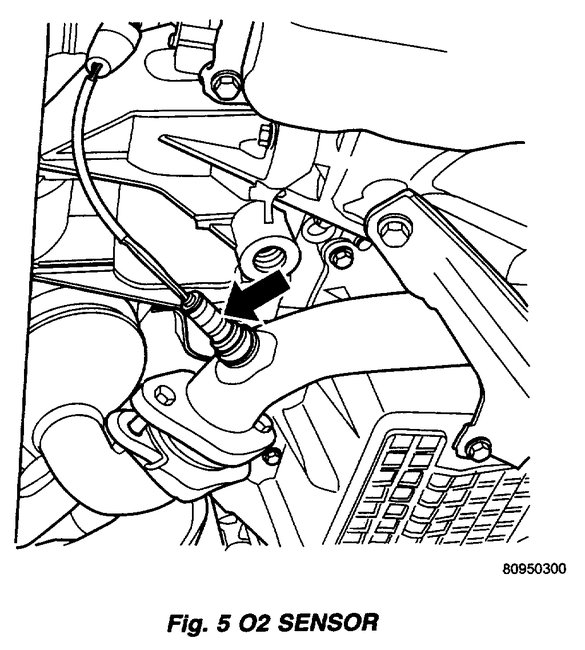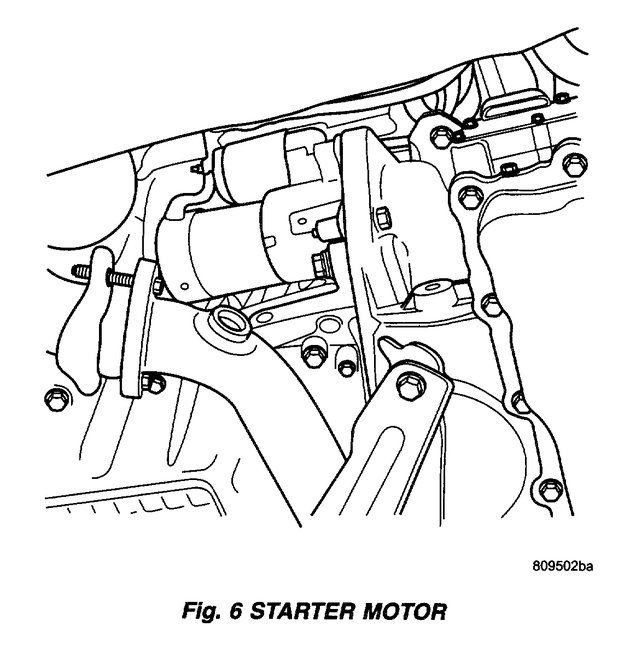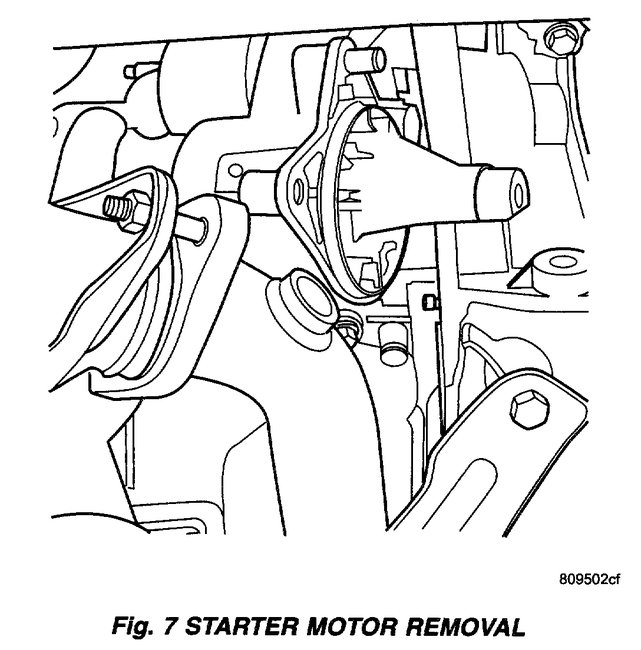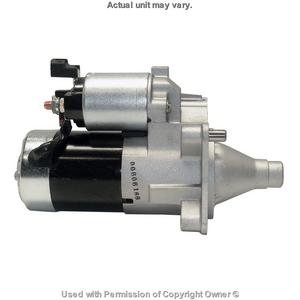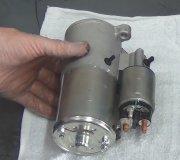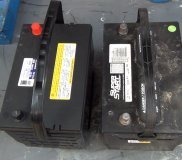Hi and thanks for using 2CarPros.com.
Since you get a click and then eventually it does start, it sounds like either a dirty or loose battery connection or the starter is going bad.
Based on your description, it sounds like a dirty or loose connection. Unlike water, metal expands when it gets hot. Thus, a connection can be tighter. Take a look through this link and follow the directions for checking, cleaning, and tightening the connections.
https://www.2carpros.com/articles/everything-goes-dead-when-engine-is-cranked
If you determine that the starter is bad, here are the directions for replacing it. The attached pictures correlate with these directions,.
____________________________________
REMOVAL
1. Open Hood.
2. Disconnect the negative battery cable.
3. Raise vehicle and support.
4. Disconnect the electrical connector from the O(2) sensor.
Fig.5 O(2) Sensor
5. Remove the O(2) sensor from the exhaust manifold (Fig. 5).
6. Remove the front mount through bolt.
7. Remove the front mount bracket from engine block.
Fig.6 Starter Motor
8. Remove the battery cable from starter (Fig. 6).
Fig.7 Starter Motor Removal
9. Remove the lower starter bolt and remove starter (Fig. 7).
INSTALLATION
1. Install starter to transmission.
2. Start the upper starter bolt.
3. Start the lower bolt and snug it so that the starter will not move.
4. Remove the upper bolt.
5. Connect the battery cable and torque nut to 8.5 Nm (75 in. lbs.).
6. Install the front mount bracket and check heat shield location.
7. Install bolt the upper bolt and torque bolt to 54 Nm (40 ft. lbs.).
8. Install the lower and torque bolt to 54 Nm (40 ft. lbs.).
9. Install the front mount through bolt and torque bolt to 61 Nm (45 ft. lbs.).
10. Install the O(2) sensor and torque to 27 Nm (20 ft. lbs.).
11. Lower vehicle.
12. Connect the negative battery cable.
If this doesn't help or you have other questions, let me know.
Take care,
Joe
Images (Click to make bigger)
Friday, September 21st, 2018 AT 7:47 PM
